A rogue’s gallery: 15 shark species of particular importance to sport fishing around the world
By Doug Olander
SHARKS — anglers, like everyone else, just can’t seem to get enough of ’em.
Somewhere between 400 and 500 different species of shark swim in our oceans, in depths from mere inches, over shallow flats, to thousands of feet; from the hottest equatorial seas to freezing waters over the poles. Some never grow to a foot in length, while some man-eaters exceed 20 feet.
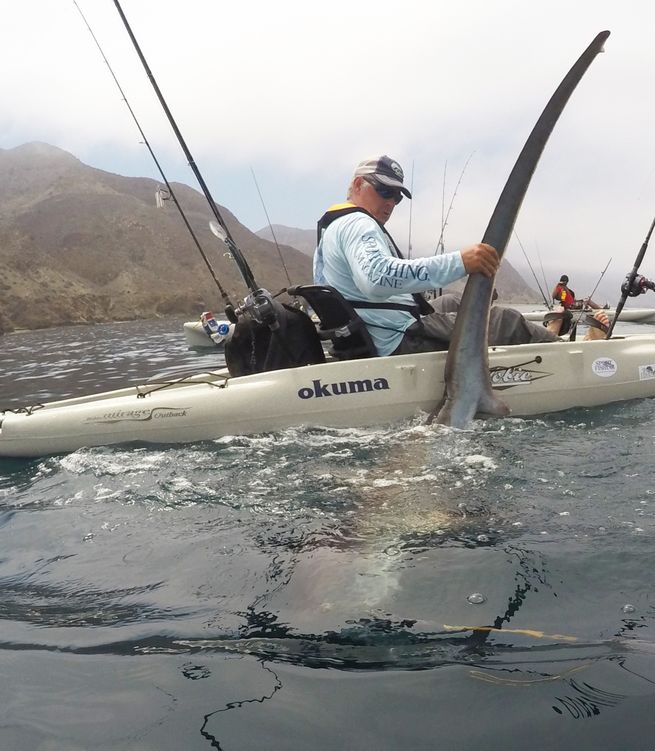
With a tail as long as its body, a thresher is unmistakable among sharks.
Doug Olander / Sport Fishing
This gallery offers a look at 15 shark species of particular important to sport fishermen — most of them species particularly likely to be encountered and/or targeted.
Some are wild on the hook — offering a performance as exciting as any species of game fish in the world. Many are unspectacular but dogged fighters. But no matter how they fight, bringing a big one boatside offers one of fishing’s more dramatic moments.
I’ve included the all-tackle world record for each species. Some species are part of the International Game Fish Association’s line-class-record system. IGFA members can see all records at the IGFA Web site.
1 of 15
BLACKTIP AND SPINNER SHARKS
Carcharhinus limbatus and C. brevipinna
Blacktip world record: 270 pounds, 9 ounces — 8 feet long (Kenya, 1984)
Spinner world record: 208 pounds, 9 ounces — length not listed (Texas, 2009)

Michael Patrick O’Neill / mpostock.com
Blacktip sharks and the closely related, very similar spinner shark, are among the most widespread and cosmopolitan of “sporting” sharks, found in all the world’s temperate and tropical waters and ranging from flats they share with bonefish to deeper offshore waters. These active and agile predators are popular with anglers who at times catch them casting topwater lures and flies and enjoy their spirited fight and, often, their repeated leaps. These species are responsible for most of the annual shark bites reported by Florida beach-goers when they follow mullet runs into the murky waters near shore, and the flash of an arm or foot may attract their attention.
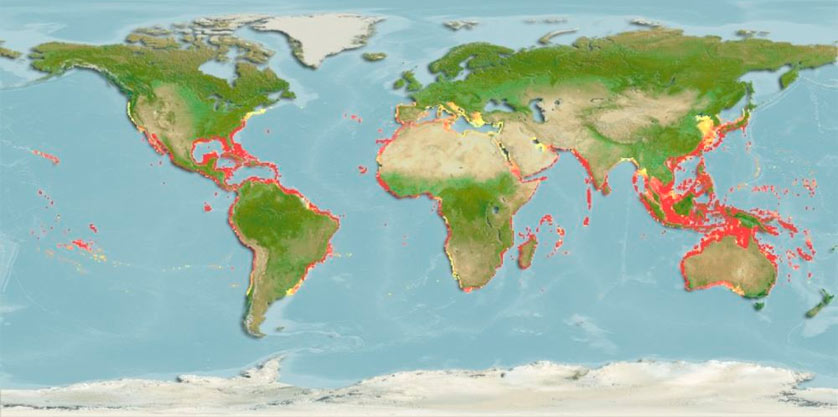
Courtesy AquaMaps.org

Doug Olander / Sport Fishing
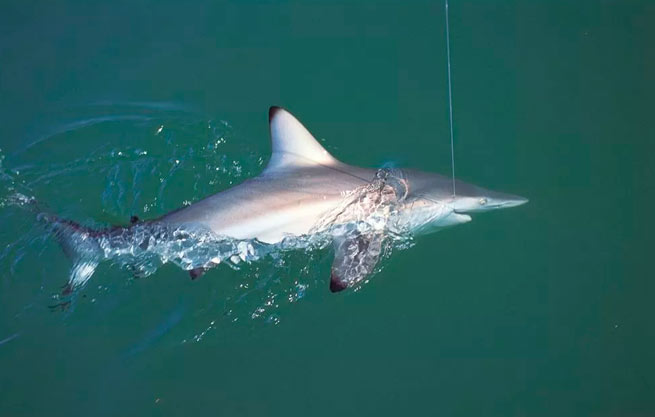
Doug Olander / Sport Fishing
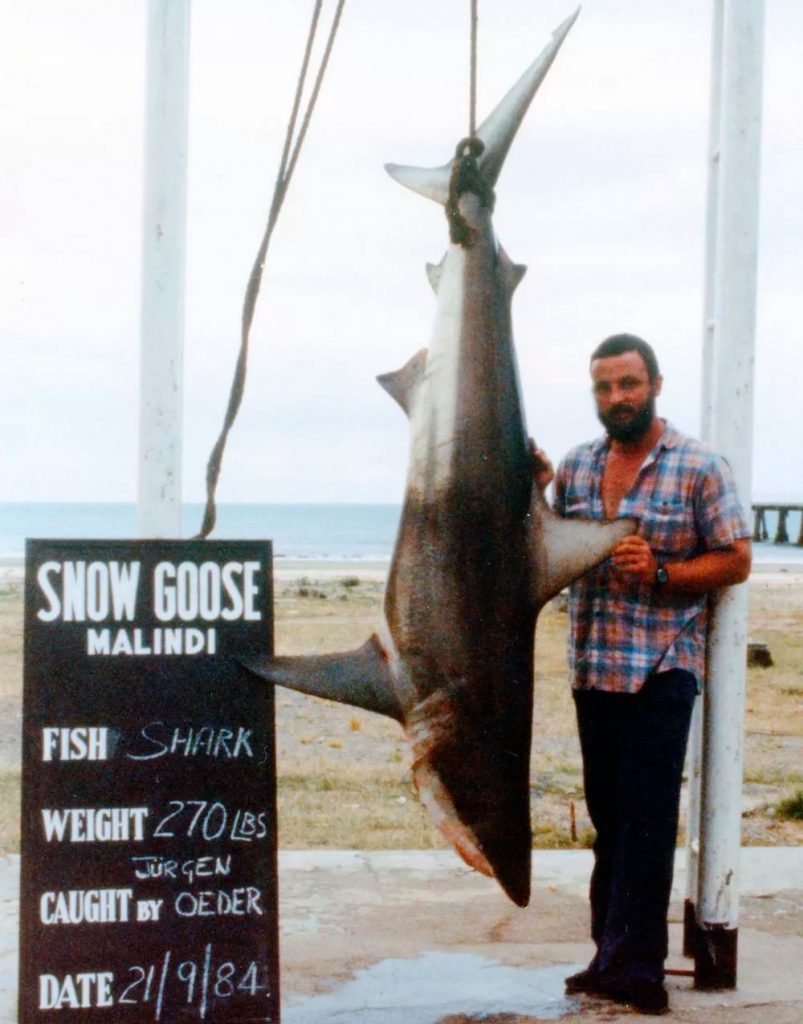
The IGFA all-tackle world-record blacktip shark.
270 pounds, 9 ounces.
Kanya, 1984
courtesy International Game Fish Association
2 of 15
More about spinners and blacktips: Read about Florida’s fabulous topwater action for spinner sharks and blacktips just off the beaches.
3 of 15
BLUE SHARK
Prionace glauca
World record: 528 pounds — 10 feet long (New York, 2001)
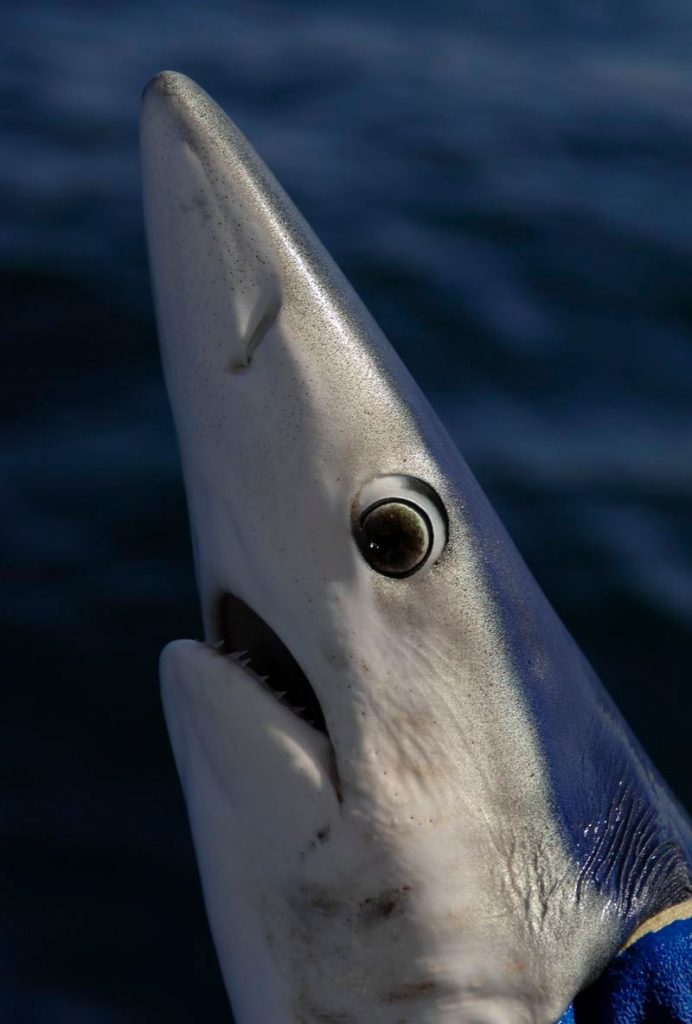
David Shuler
The long, slender and aptly named blue shark is nowhere a stranger, being circumglobal in tropical and temperate waters. The wide-ranging sharks of offshore waters can be a nuisance. Their fight is less than spectacular, though bringing a big one to the boat can get exciting. Arguably one of the least-desirable sharks for eating. While attacks on humans are rare, blues are in the “potentially dangerous” category.
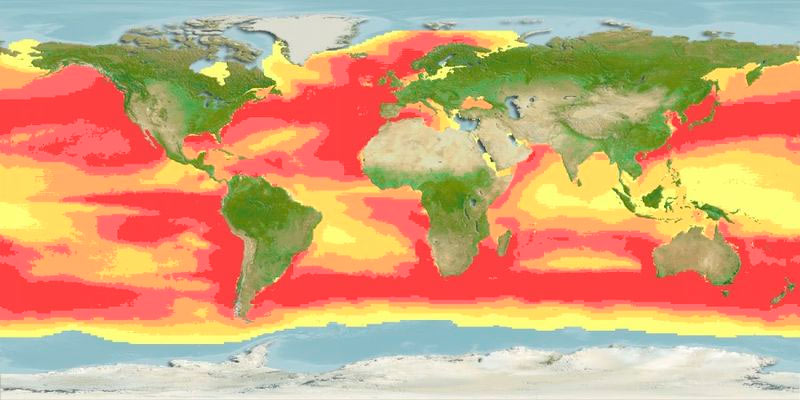
Courtesy AquaMaps.org
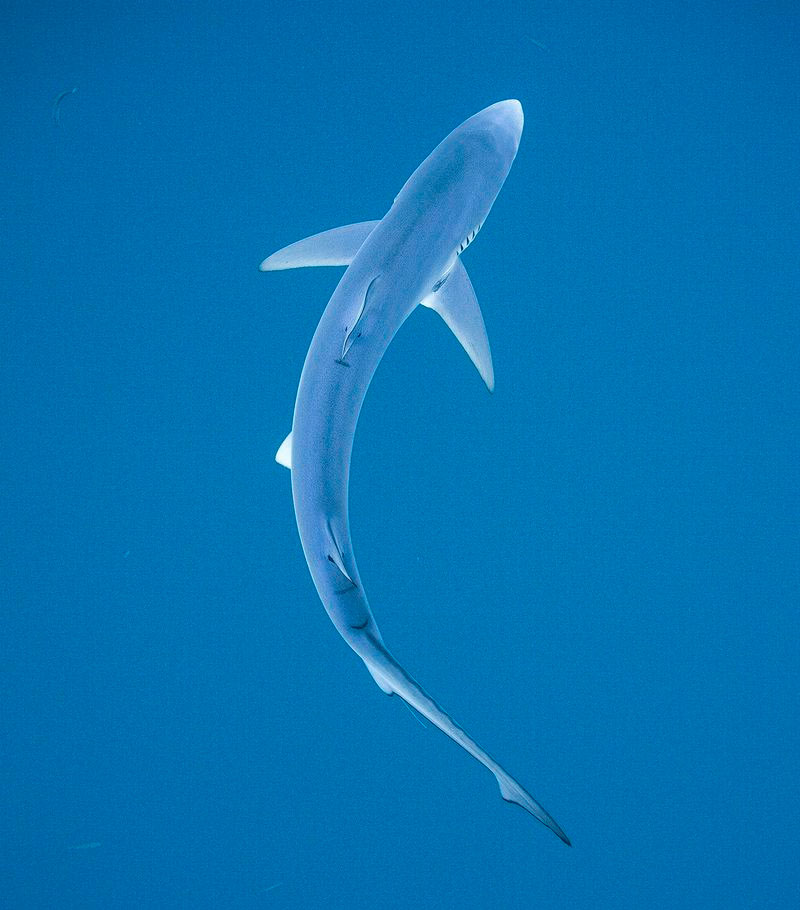
Richard Herrmann
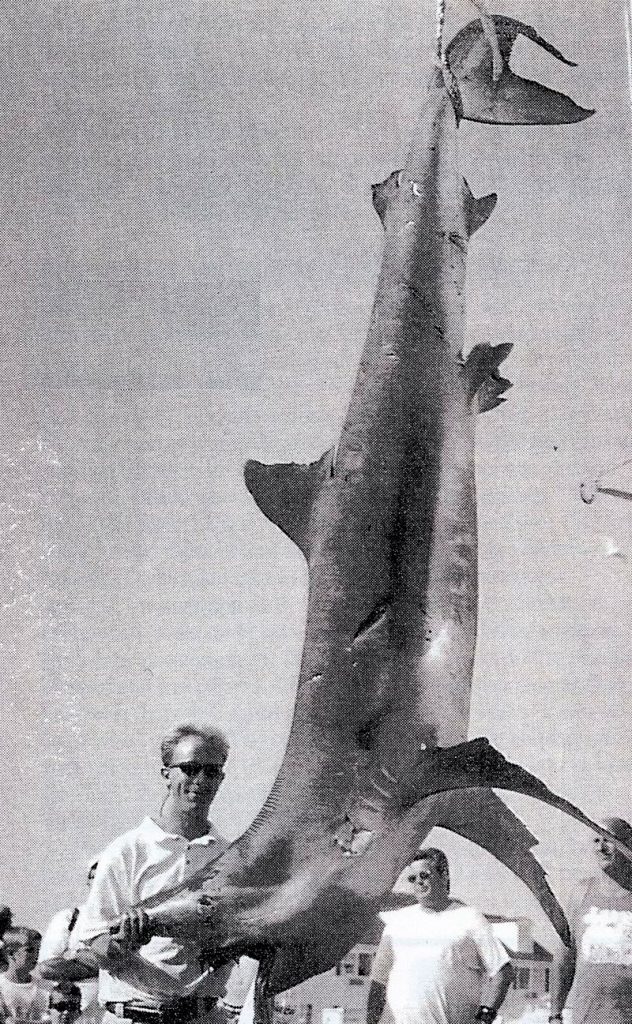
528 pounds
Montauk, New York, 2001
courtesy International Game Fish Association
4 of 15
BONNETHEAD SHARK
Sphyrna tiburo
World record: 32 pounds — 3 ½ feet long (Florida, 2013)
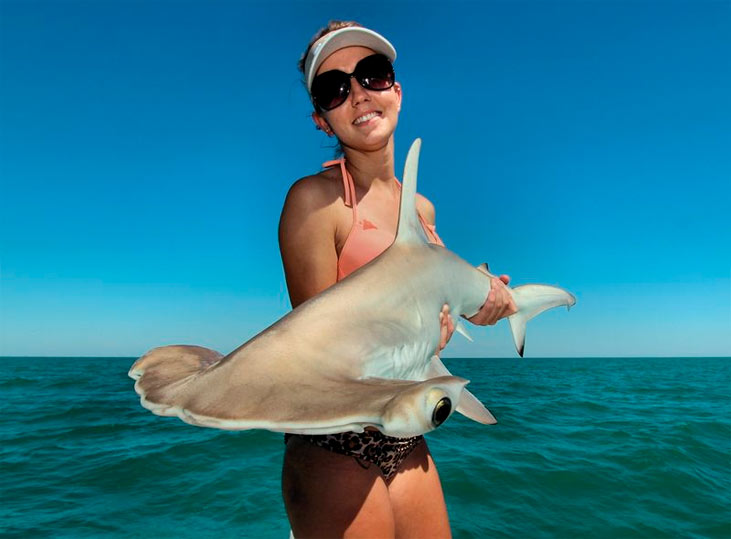
In essence a small, inshore hammerhead, the bonnethead prefers estuaries, flats and bays in tropical and temperate waters of the New World, along both western Atlantic and eastern Pacific coasts of North and South America. Flats anglers can sight-cast to them as they actively search the sand with zigzag turns looking for anything edible. Agile little bonnetheads will hit lures and flies, and offer great light-tackle sport.
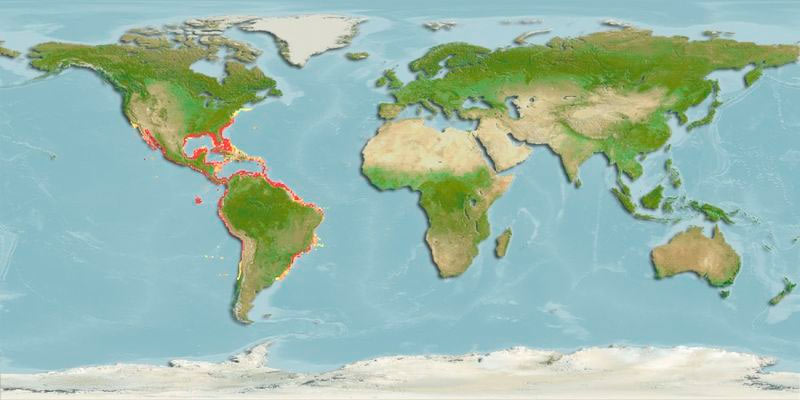
Courtesy AquaMaps.org
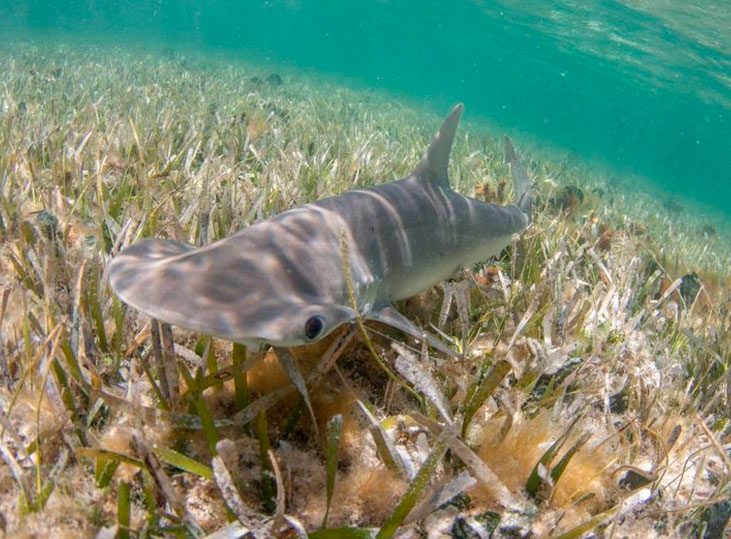
Adrian E. Gray
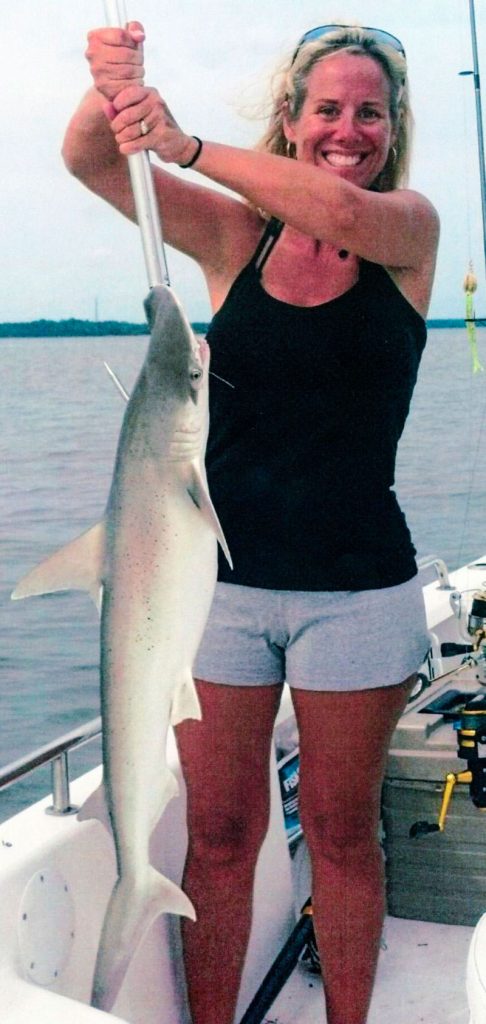
32 pounds
Apalachicola Bay, Florida, 2013
courtesy International Game Fish Association
5 of 15
BULL SHARK
Carcharhinus leucas
World record: 697 pounds, 12 ounces — 8 ½ feet long (Kenya, 2001)
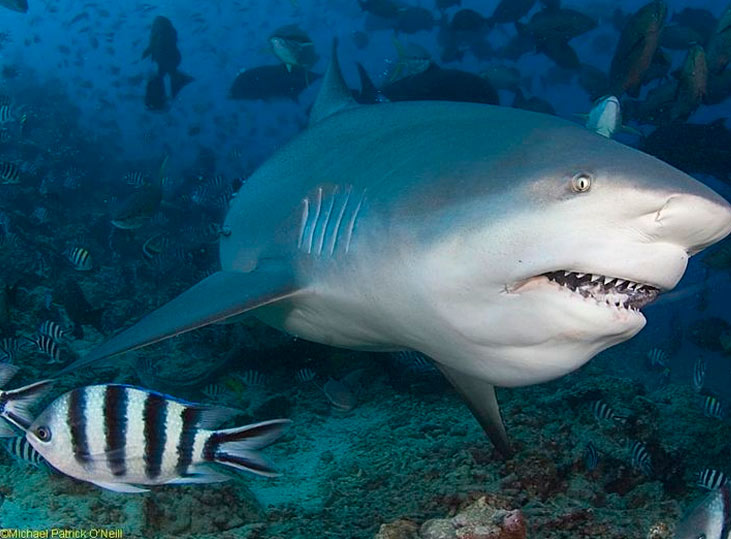
Michael Patrick O’Neill / mpostock.com
Unquestionably one of the most dangerous of the world’s sharks, the bull is also one of the most ubiquitous: Anywhere in the world there’s a tropical or temperate coastline, there are bull sharks. Bulls move freely far up rivers and into lakes. The thick-bodied, powerful sharks when hooked offer a reasonably stubborn but unspectacular fight (though the release might be lively).
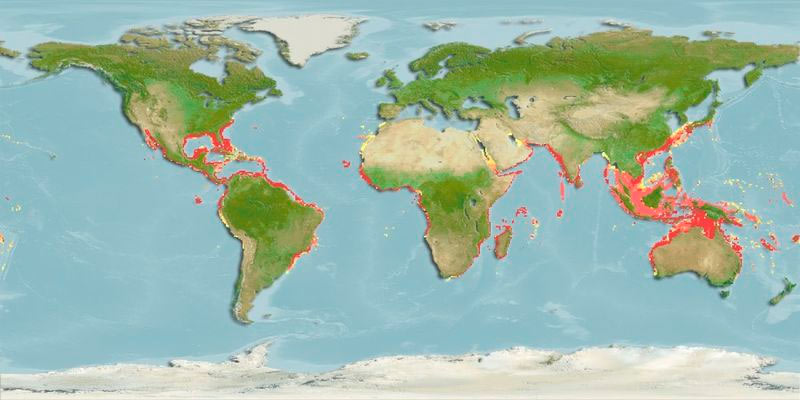
Courtesy AquaMaps.org
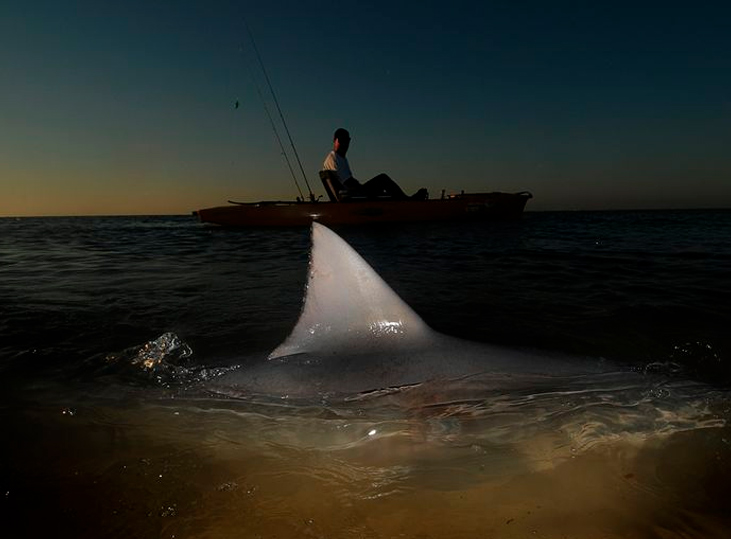
Jason Arnold / jasonarnoldphoto.com
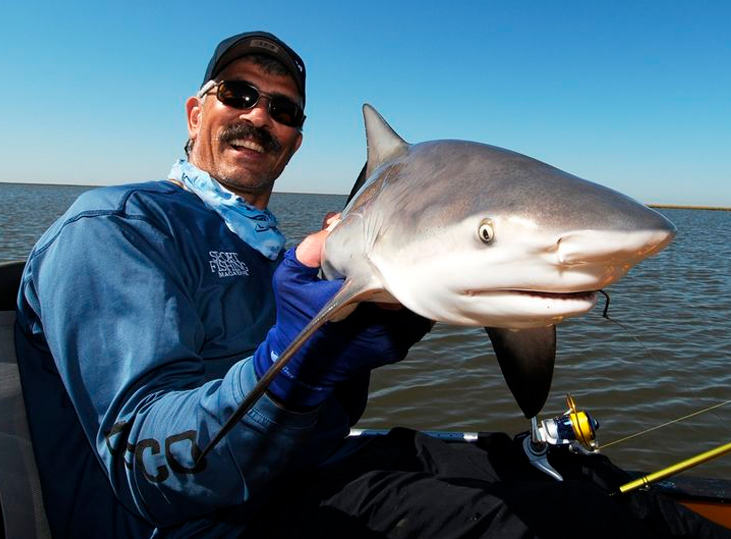
Jason Arnold / jasonarnoldphoto.com
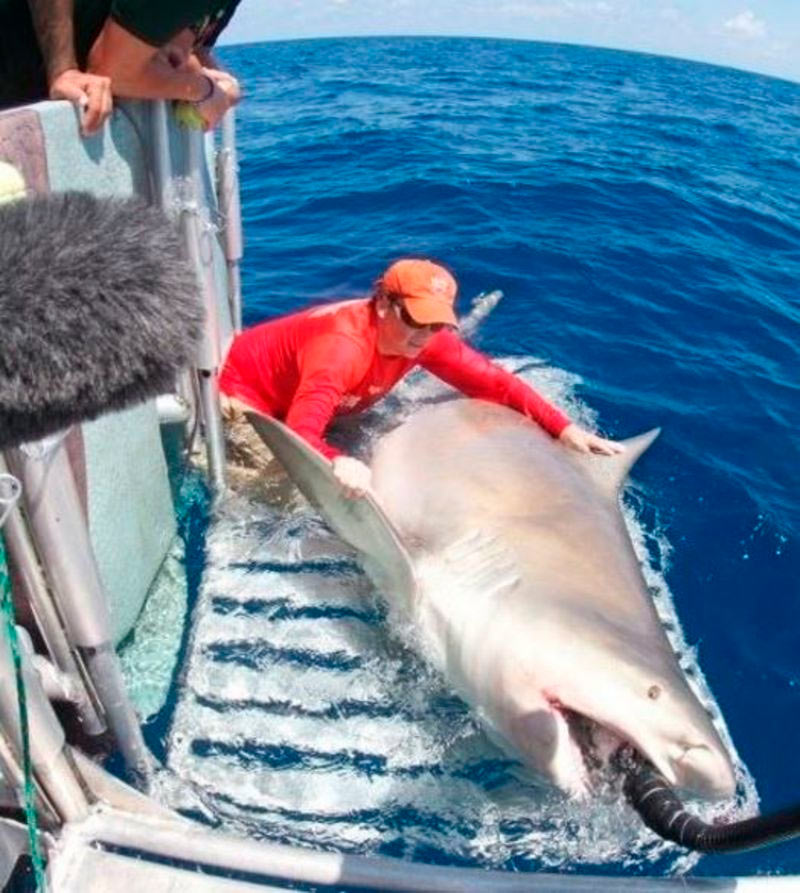
6 of 15
GREENLAND SHARK
Somniosus microcephalus
World record: 1,708 pounds, 9 ounces — 13-plus feet long (Norway, 1987)
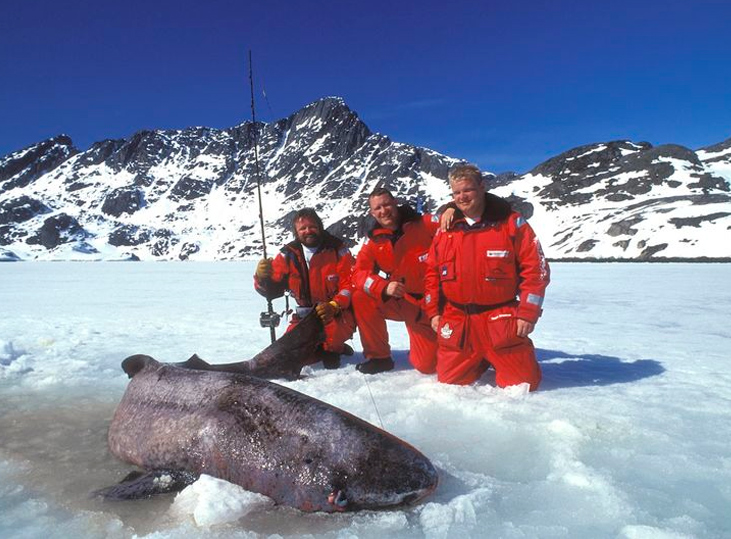
Johnny Jensen
Unlike other sharks on this list, the Greenland shark is restricted to the far-north reaches of both sides of the Atlantic and up into the most northern Arctic waters. These sharks have been aged up to 392 years; sexual maturity occurs at around 150 years. Very limited sport fisheries in fjords, sometimes through the ice, have offered a handful of anglers the unique chance to land one of these monsters, which they do more for the novelty than any sort of real fight. Given this species’ habitat, humans are safe from Greenland sharks.
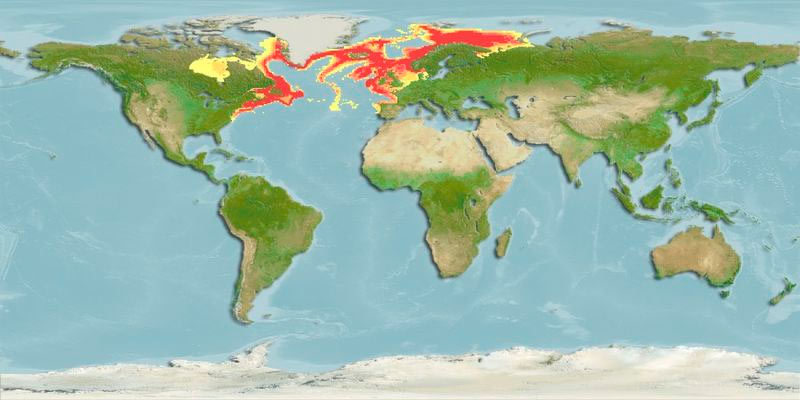
Courtesy AquaMaps.org
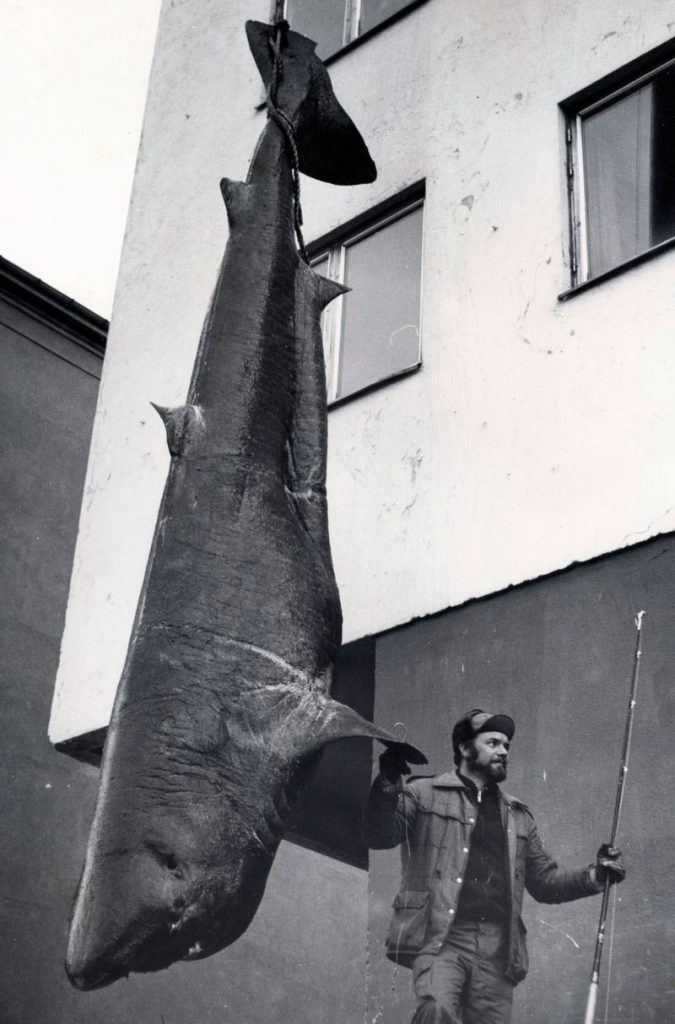
1,708 pounds, 9 ounces
Trondheimsfjord, Norway, 1987
courtesy International Game Fish Association
More on Greenland Sharks: See photos of a Greenland shark-fishing adventure.
7 of 15
GREAT HAMMERHEAD
Sphyrna mokarran
World record: 1,280 pounds — 11 ½ feet long (Florida, 2006)
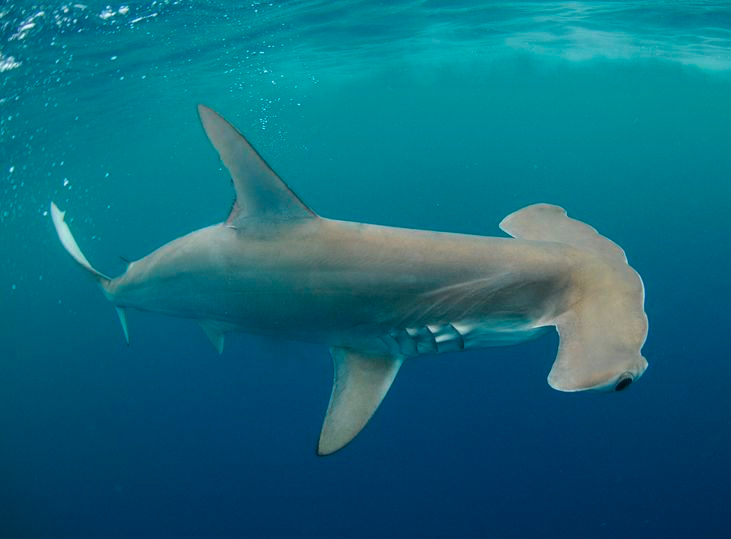
Jason Arnold / jasonarnoldphoto.com
Anglers may catch any of several hammerhead species besides the great hammerhead including the smooth and scalloped varieties, but S. mokarran is the largest. It roams the world’s oceans, ranging from shallow nearshore waters to offshore. Attacks on people are exceedingly rare. A fair opponent when hooked, though studies have shown that hammerheads are particularly prone to mortality when released, even if they appear healthy.
Note that all three of these hammerhead species are widely illegal to harvest, with the scalloped hammerhead added in 2014 to the federal Endangered Species List.
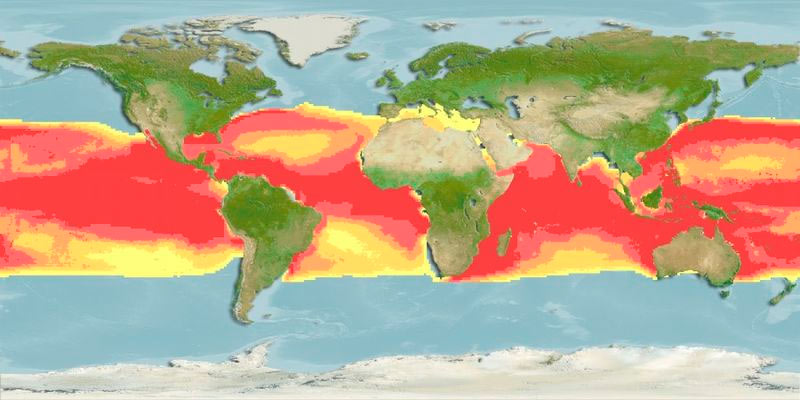
Courtesy AquaMaps.org
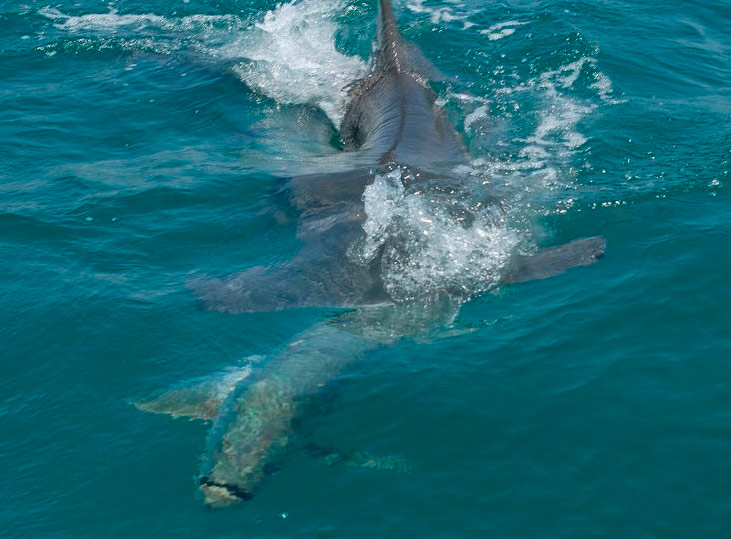
Capt. Jenni Bennett
More on Hammerheads:Hammerhead sharks are particularly vulnerable to post-release mortality, a study has shown, and would be best not targeted by anglers, though incidental hookups are inevitable.
8 of 15
LEMON SHARK
Negaprion brevirostris
World record: 405 pounds — nearly 8 feet long (North Carolina, 1988)

Brian Grossenbacher
Widely distributed, lemons prefer shallower coastal waters, and they’re definitely the big dog of the flats. Lemon sharks can be chummed in to a skiff in a couple of feet of clear on the right tides, and sight-casting to them and hooking up in such shallow water is explosive action. Although Lemon attacks on humans are rare, they’re not unheard of. By law, lemons must be released in the waters of most coastal states where they occur.

Michael Patrick O’Neill / mpostock.com
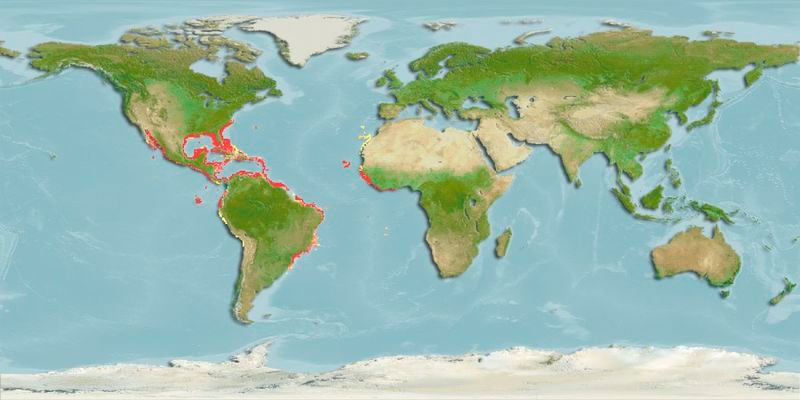
Courtesy AquaMaps.org
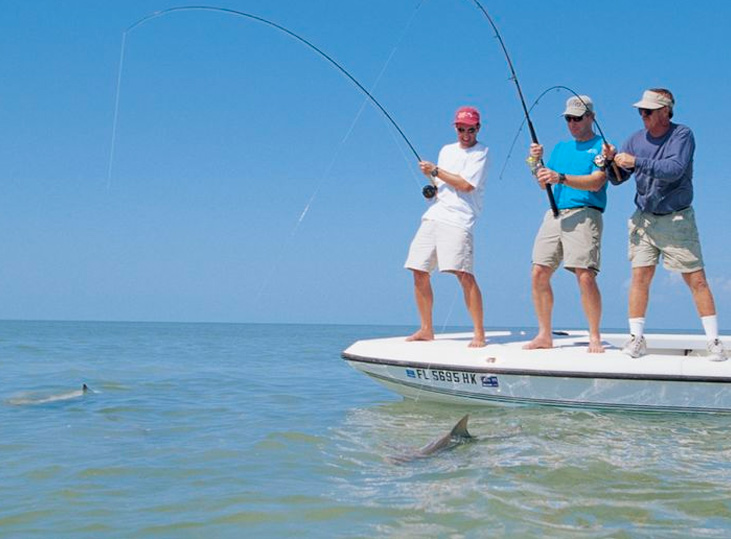
Doug Olander / Sport Fishing
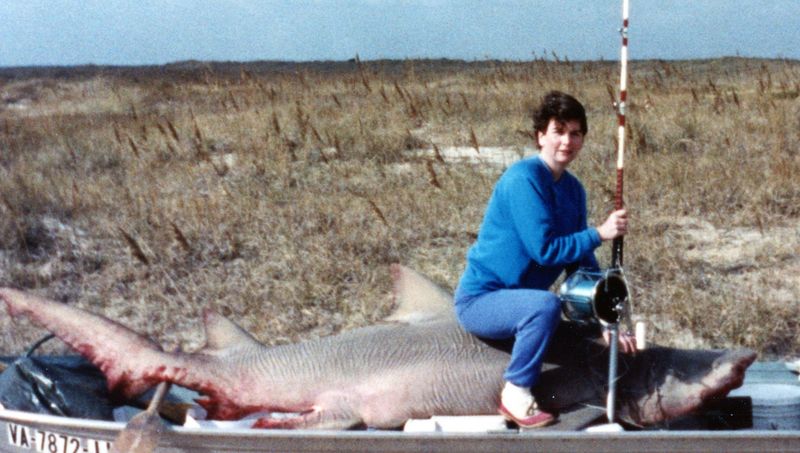
405 pounds
Buxton, North Carolina, 1988
courtesy International Game Fish Association
9 of 15
MAKO SHARK
Isurus paucus (shortfin)
World record: 1,221 pounds — 11 feet long (Massachusetts, 2001)
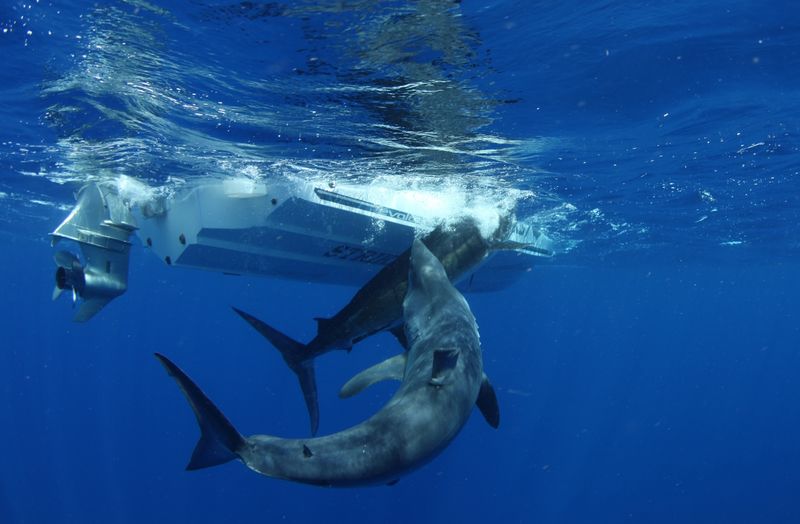
Al McGlashan
Found in most of the world’s temperate and tropical seas, the mako shark is truly one of the ocean’s great game fishes. This fastest of all sharks often goes ballistic when hooked, repeatedly making memorable sky-high somersaulting leaps. They’ve been known to jump into boats, and frequently chomp on outboards’ lower units. Makos will devour live baits but also track down marlin lures trolled at high speeds. Makos are also considered excellent eating. The species certainly has the potential to present a danger to people. The longfin mako, I. paucus, is less common and stays farther offshore.
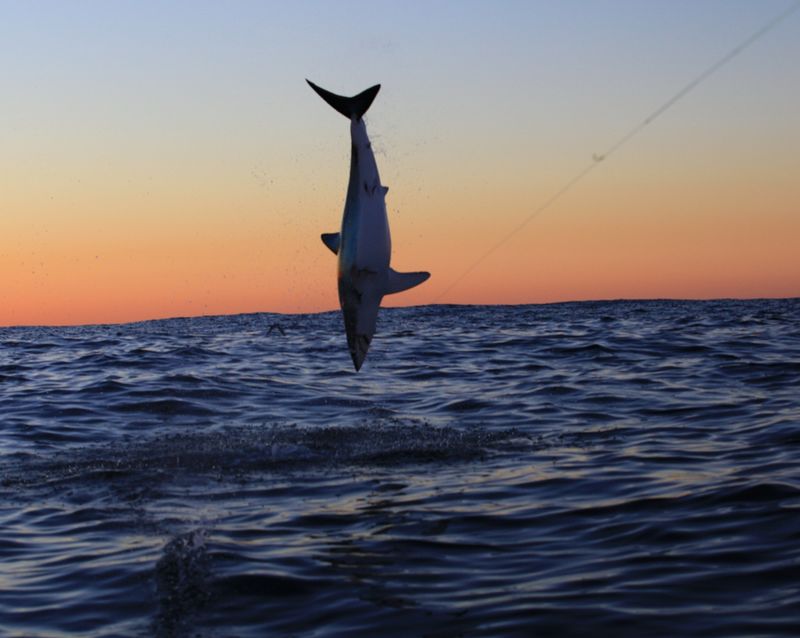
Al McGlashan
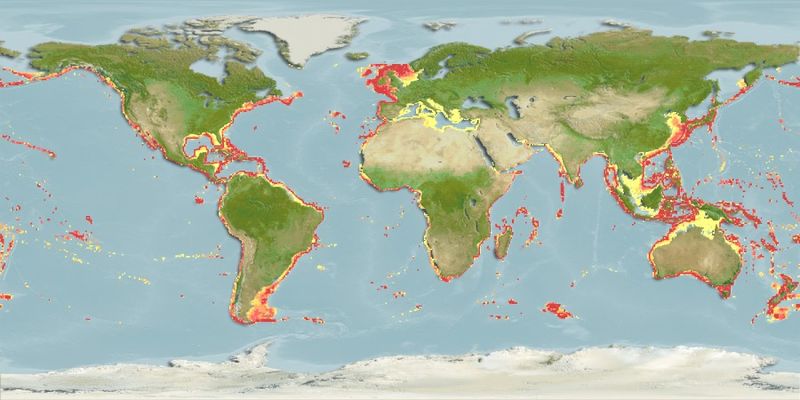
Courtesy AquaMaps.org
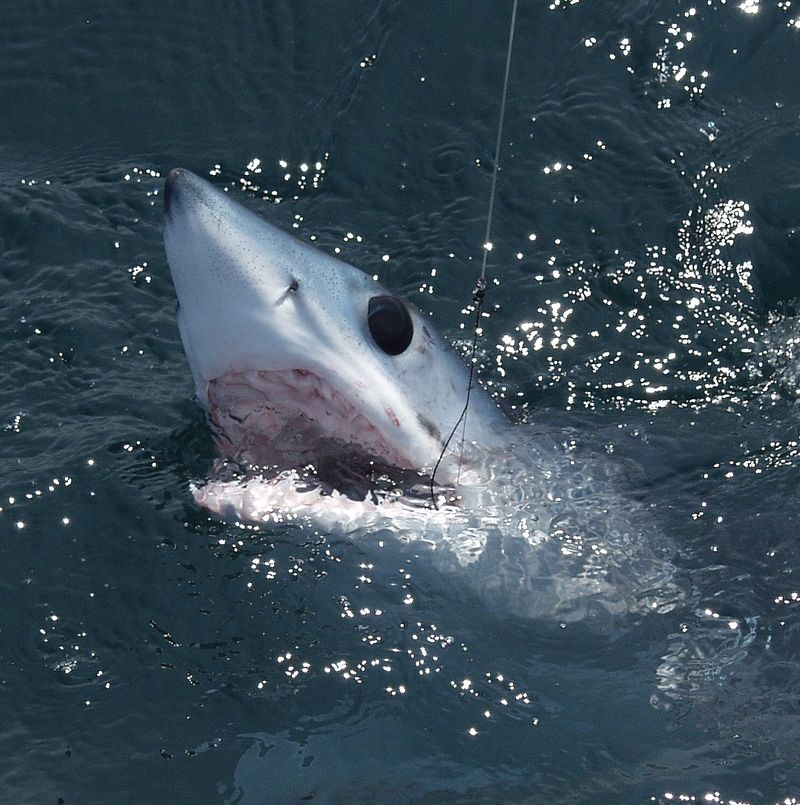
Tim Smith
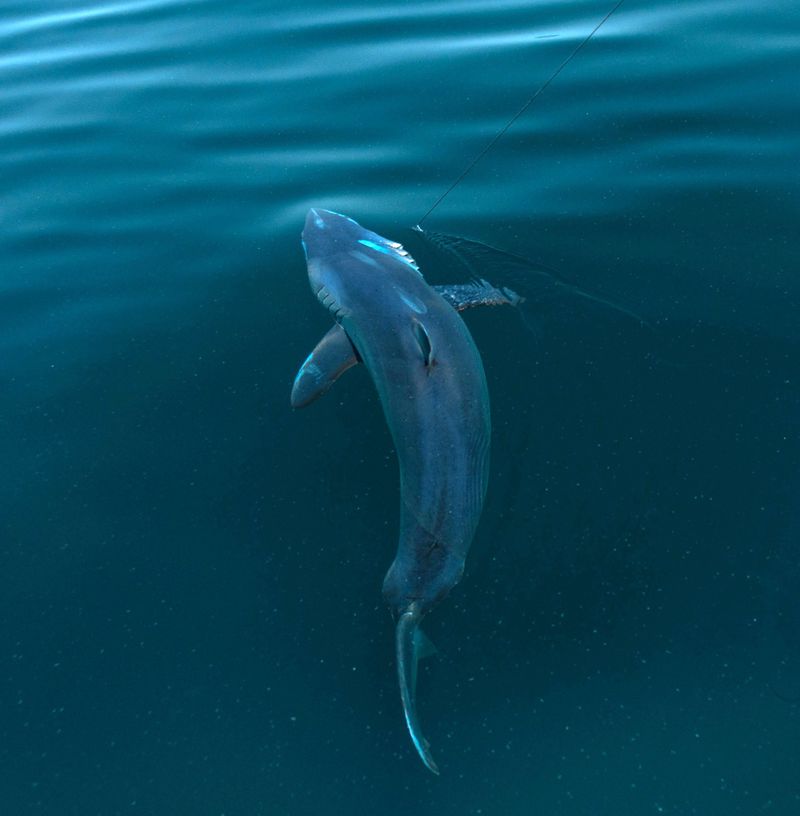
Rich Ryan
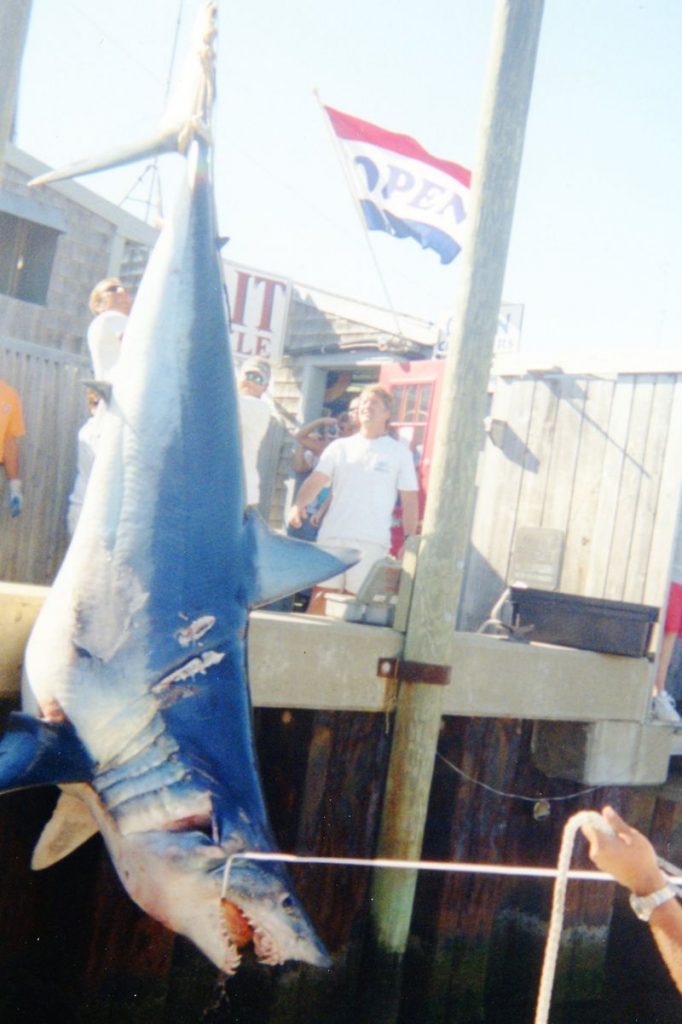
1,221 pounds
Chatham, Massachusetts, 2001
courtesy International Game Fish Association
10 of 15
OCEANIC WHITETIP
Carcharhinus longimanus
World record: 369 pounds — 7 feet (Bahamas, 1998)
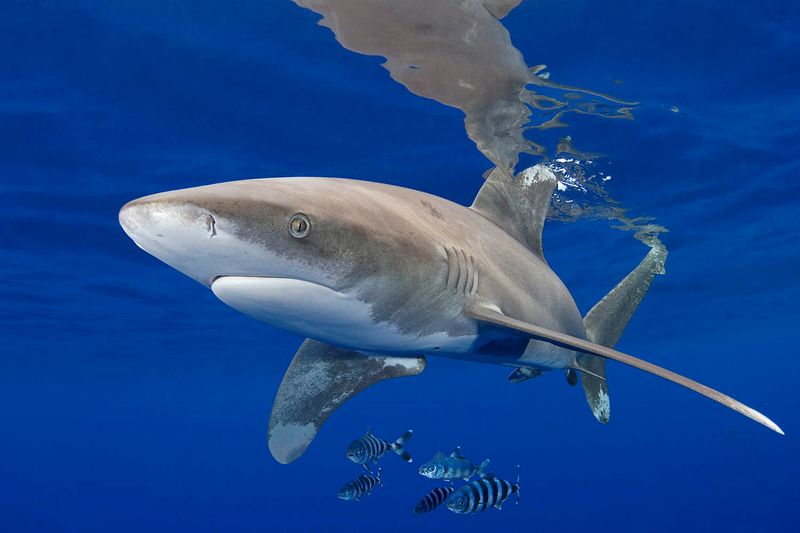
© Doug Perrine
Common in tropical, temperate and cool-temperate seas worldwide, the whitetip is one of the requiem sharks; its close relatives include the bull, bronze whaler, dusky, silky and tiger. These open-ocean hunters are fast and aggressive, and many’s the offshore angler who has lost a prize to them. At the same time, when hooked, they’re quick, tough opponents. Whitetips definitely present a danger to humans.
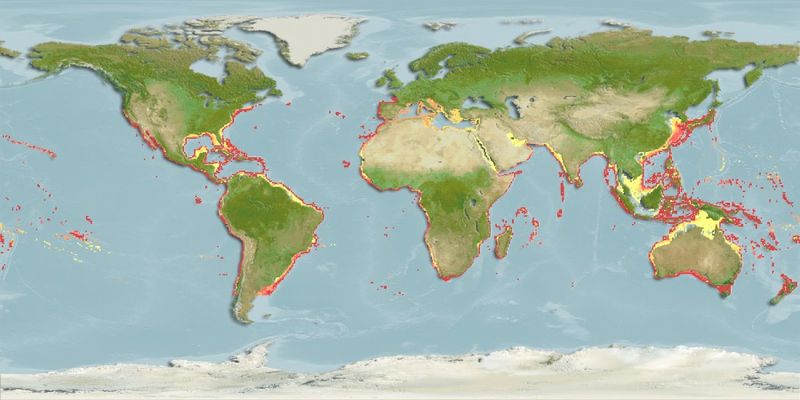
Courtesy AquaMaps.org
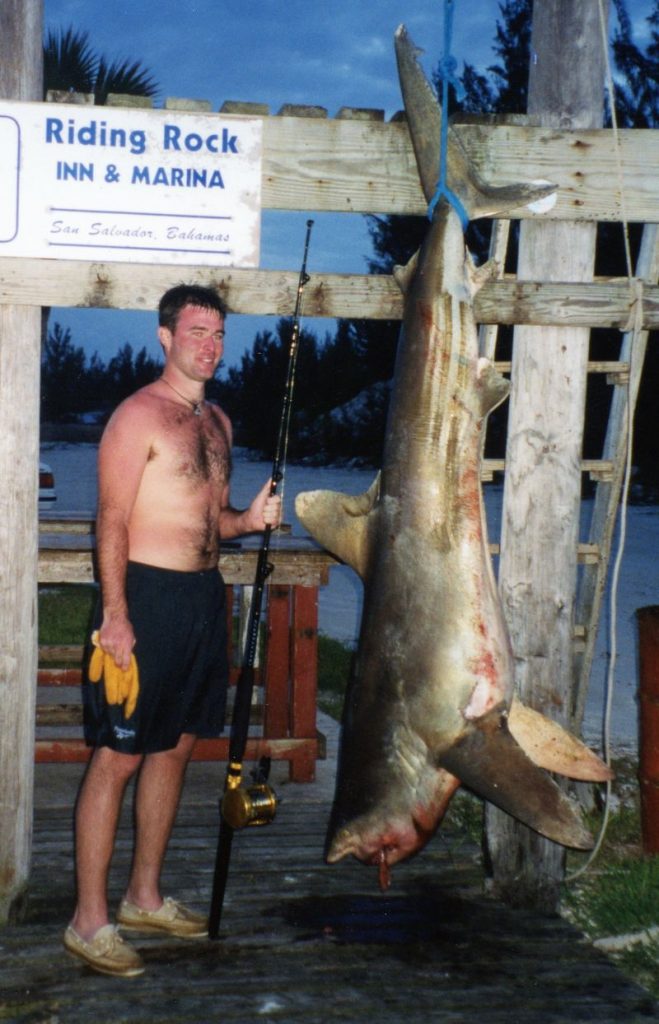
369 pounds
San Salvador, Bahamas, 1998
courtesy International Game Fish Association
11 of 15
PORBEAGLE SHARK
Lamna nasus
World record: 507 pounds — 8 feet long (Scotland, 1993)
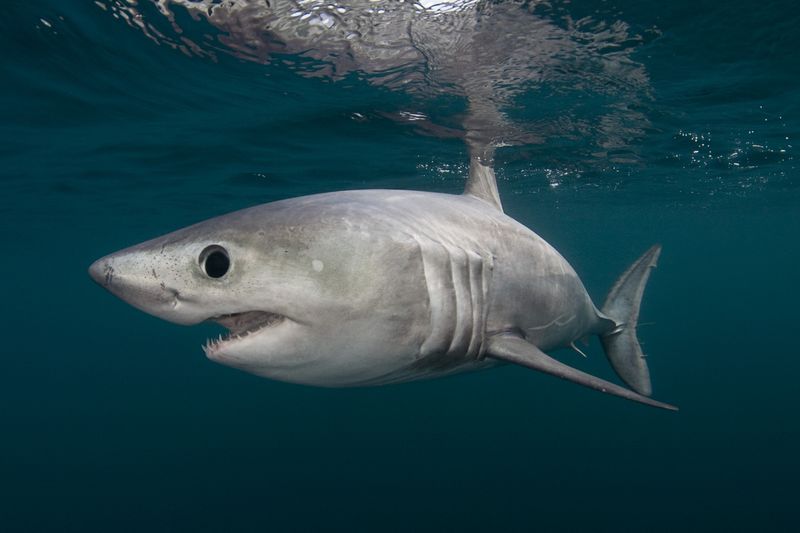
© Doug Perrine
Sometimes call “fat makos,” the porbeagle is indeed closely related to and more robust than the mako. They also inhabit cooler waters, in the entire North Atlantic and southern hemisphere. Like the mako, the porbeagle is an outstanding game fish, though far less common, and is also fine eating. A limited targeted sport fishery off the U.K. has resulted in some fine catches in recent years. It is also valued as a food fish. The cool waters that porbeagles inhabit preclude much contact with humans, hence they’re not a likely threat.
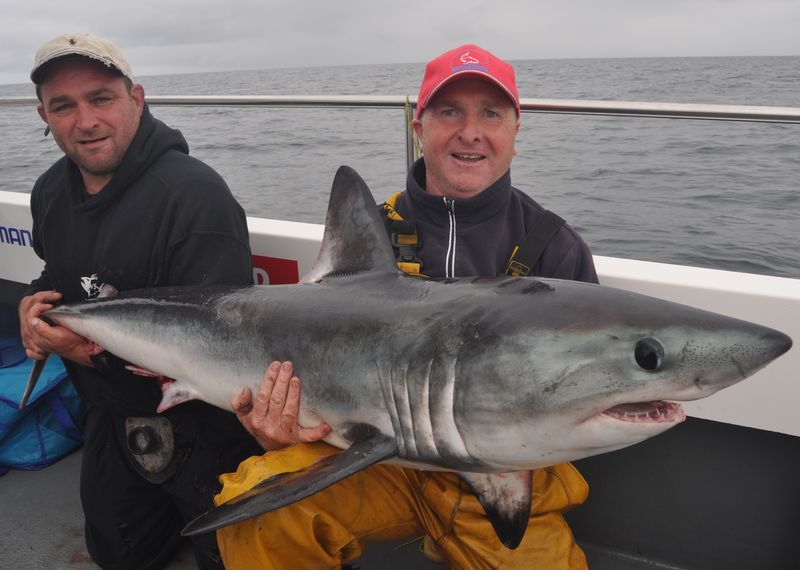
Dave Lewis
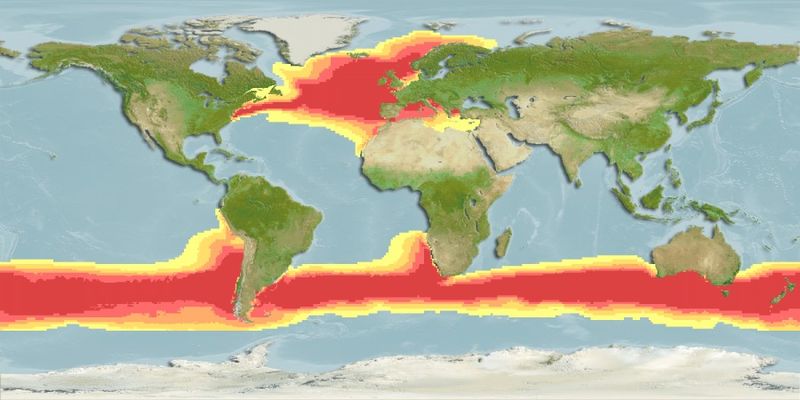
Courtesy AquaMaps.org

© Doug Perrine
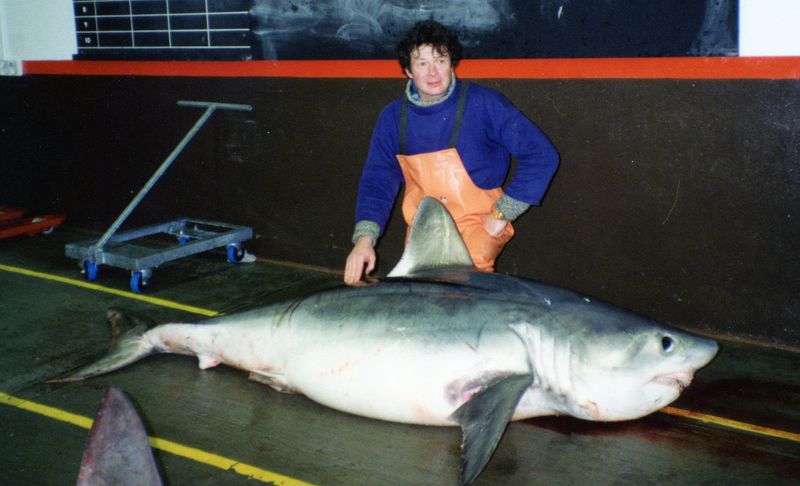
507 pounds
Caithness, Scotland, 1993
courtesy International Game Fish Association
12 of 15
SALMON SHARK
Lamna ditropis
World record: 461 pounds, 9 ounces — 7 ½ feet long (Alaska, 2009)
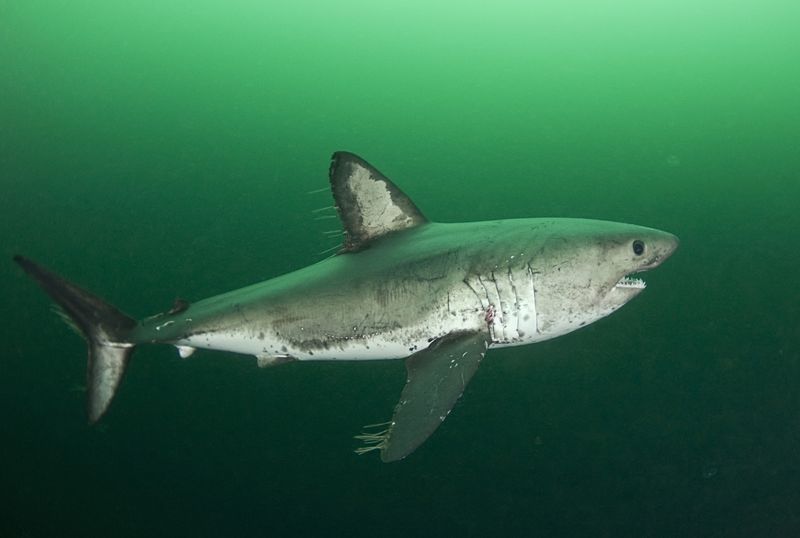
© Doug Perrine
Basically the north Pacific’s version of the north Atlantic porbeagle, the very similar salmon shark is a cold-water version of the mako. Like many large-shark species, the salmon shark is warm-blooded, heating its blood well above ambient water temps. Targeted fisheries are limited, mostly to areas where the sharks follow runs of salmon in close to the coasts of Alaska. Salmon sharks offer exciting, sometimes aerial, action for northern anglers.
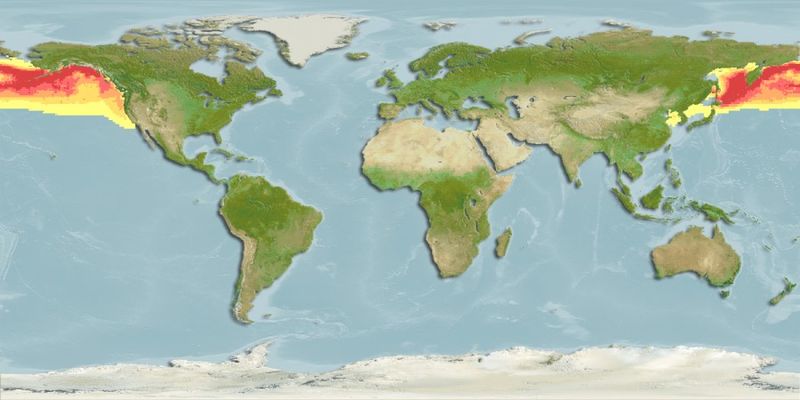
Courtesy AquaMaps.org
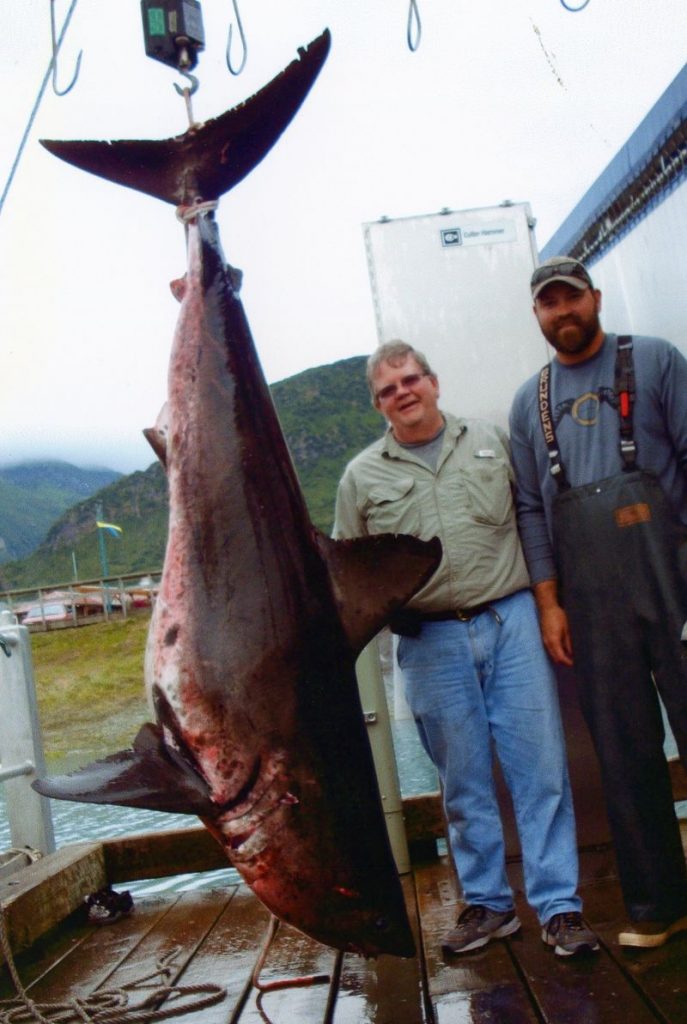
461 pounds, 9 ounces
Valdez, Alaska, 2009
courtesy International Game Fish Association
13 of 15
THRESHER SHARK
Alopias vulpinis
World record: 767 pounds, 3 ounces — 9 feet long (to fork of tail) (New Zealand, 1983)
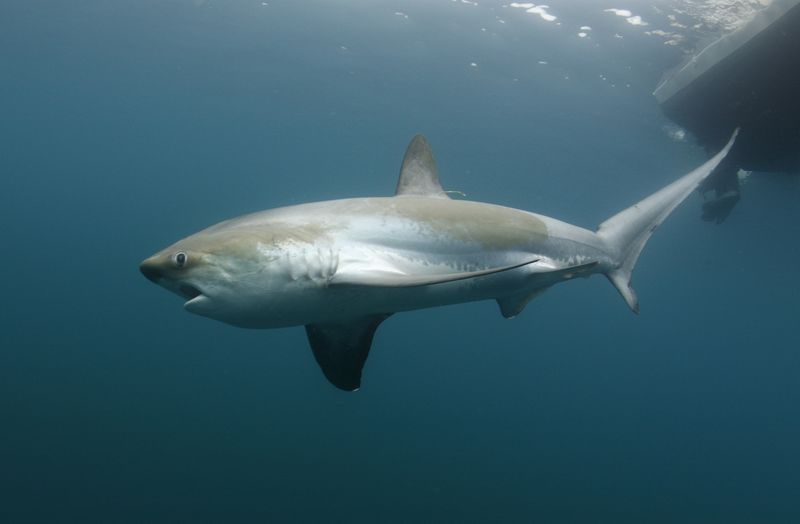
Richard Herrmann
The common thresher shark is found in nearly all seas tropical, temperate and cool-temperate around the world. It ranges from bluewater to nearshore shallows in some areas, such as Southern California beaches, seasonally. The long tail is used to herd and stun small fish. Threshers are excellent eating and tough opponents when hooked; they often leap wildly. The less common bigeye thresher (A. superciliosus) may get slightly larger: The world record is 802 pounds from New Zealand in 1981. (After that record was established, the IGFA now lumps all three thresher species into one general “thresher” category.) Threshers are not considered aggressive to humans.
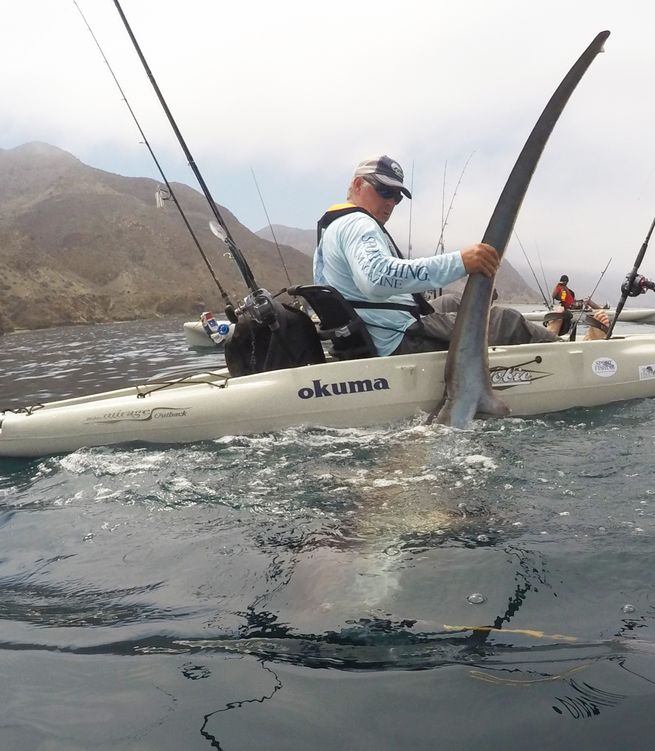
Doug Olander / Sport Fishing
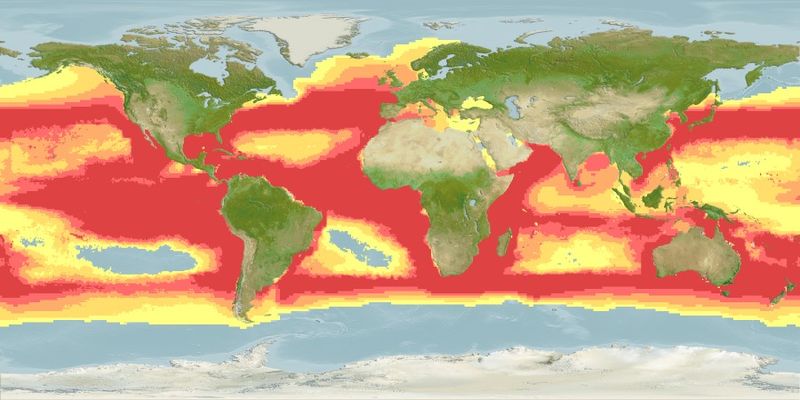
Courtesy AquaMaps.org
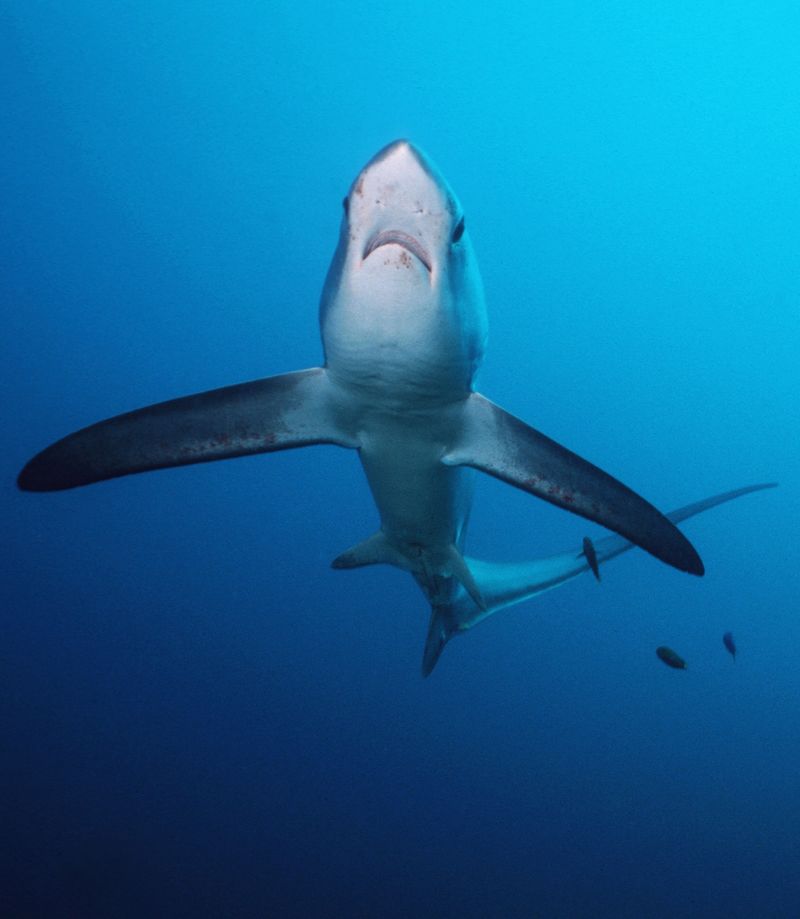
© Doug Perrine
14 of 15
TIGER SHARK
Galeocerdo cuvier
World record: 1,780 pounds — 14 feet (South Carolina, 1964)
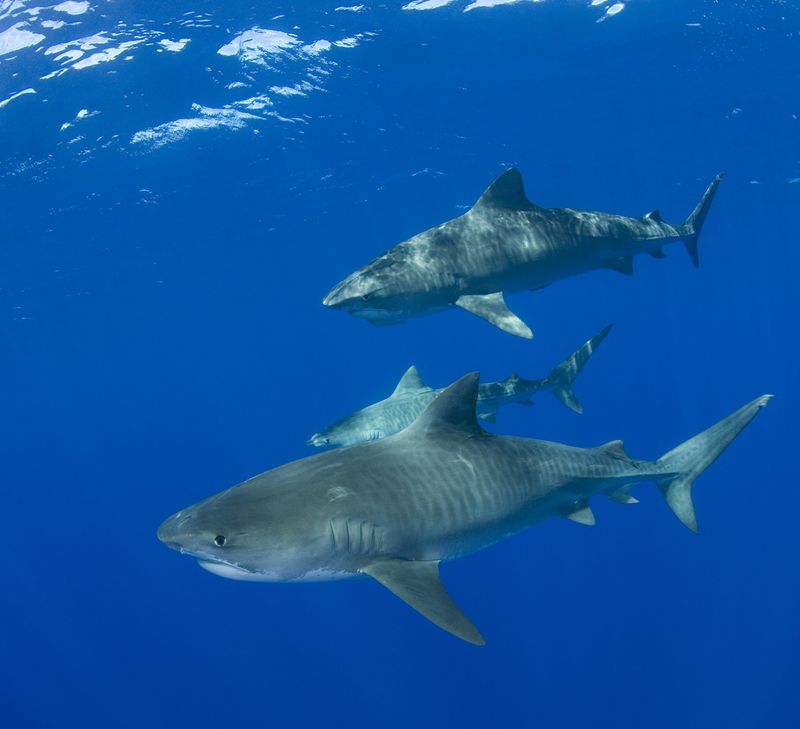
© Doug Perrine
One of the largest active shark species, tigers sharks inhabit nearshore and even inshore coastal waters worldwide. They’re not a true pelagic, open-ocean species. Tigers of well over 6,000 pounds have been reported. While impressive for their size, tigers are not terribly unpredictable or flashy fighters when hooked. They’re known to ingest just about anything edible and many things not, and they’re widely implicated in many attack on humans.
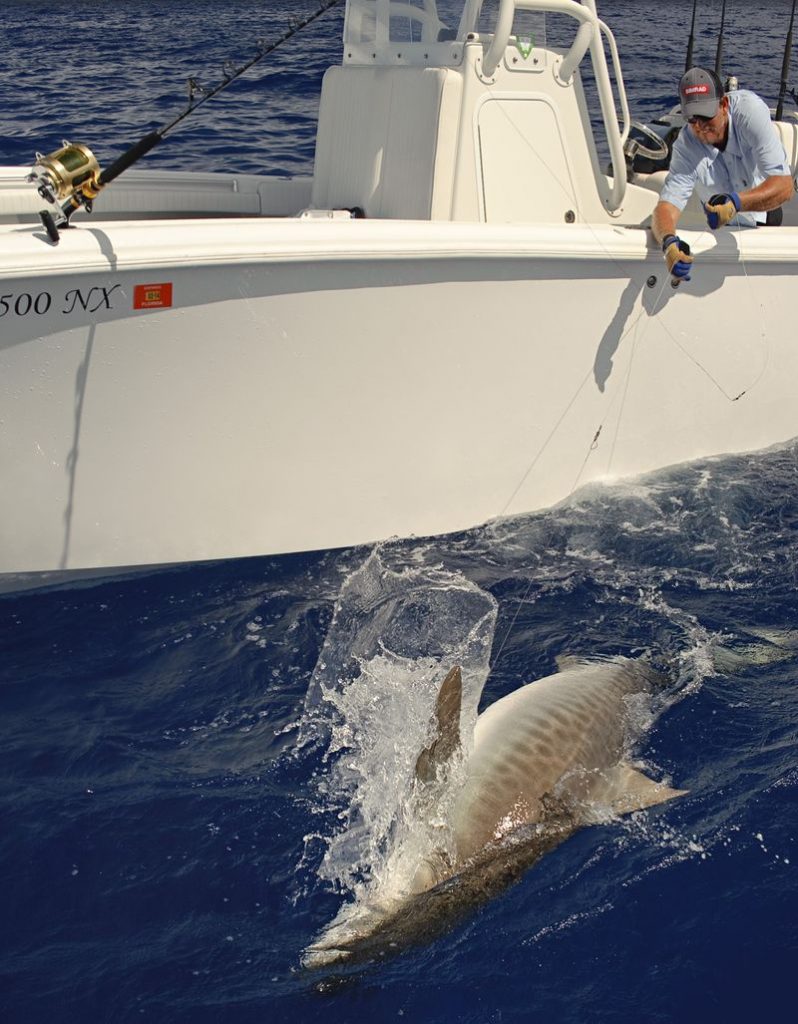
Jason Stemple
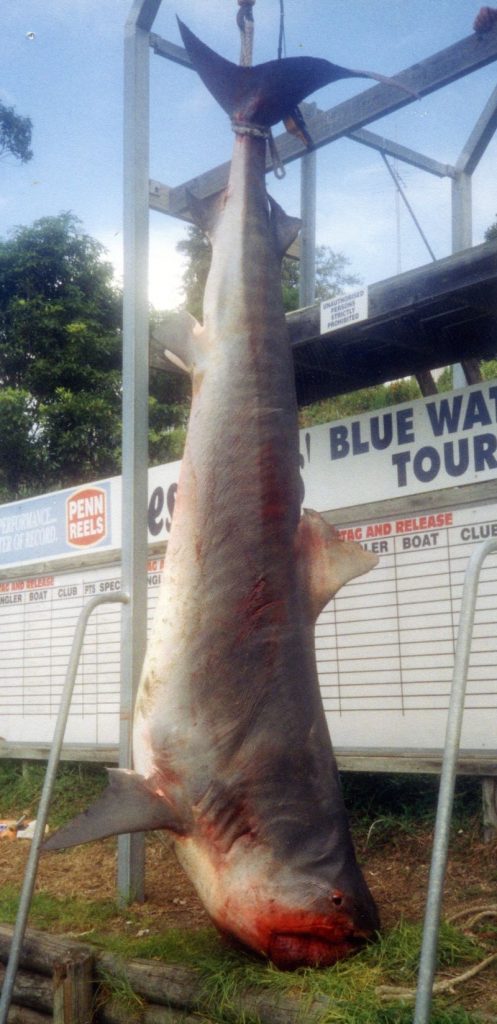
1,780 pounds
Cherry Grove, South Carolina, 1964
courtesy International Game Fish Association
15 of 15
TOPE
Galeorhinus galeus
World record: 72 pounds, 12 ounces — 5 feet (New Zealand, 1986)
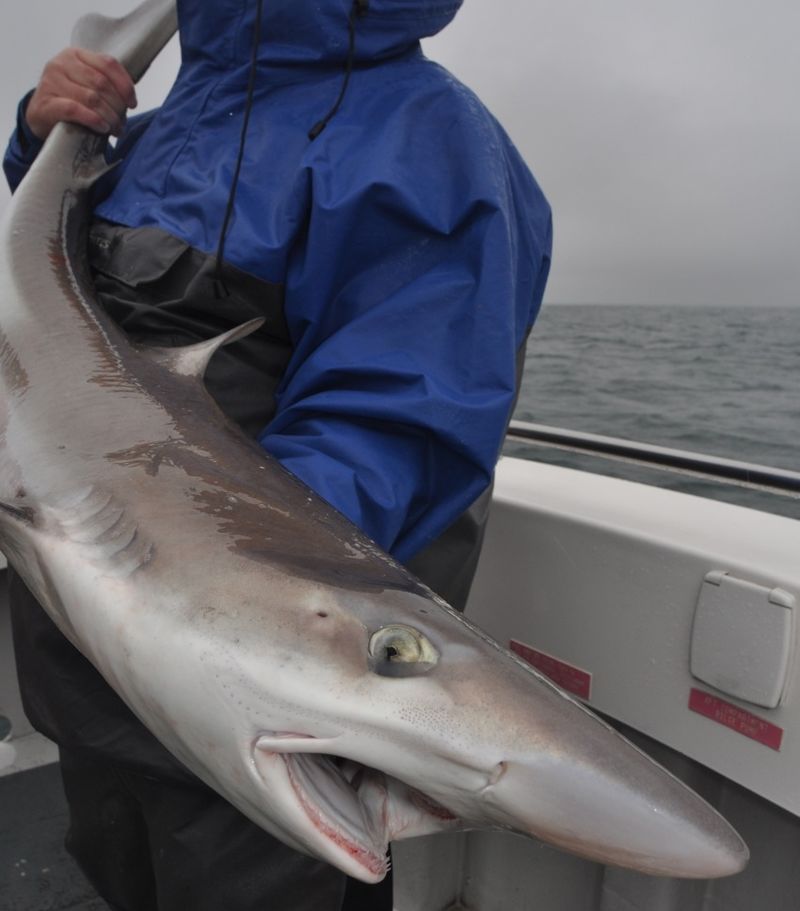
Dave Lewis
Tope range from shore to deeper ocean waters in all oceans, particularly in temperate and cold waters. As sport fish, these sharks are particularly valued in areas where cool waters preclude a great variety of game fish species, notably the British Isles as well as South Africa and southern Australia. Anglers in these areas target tope for their quite-respectable fighting qualities.
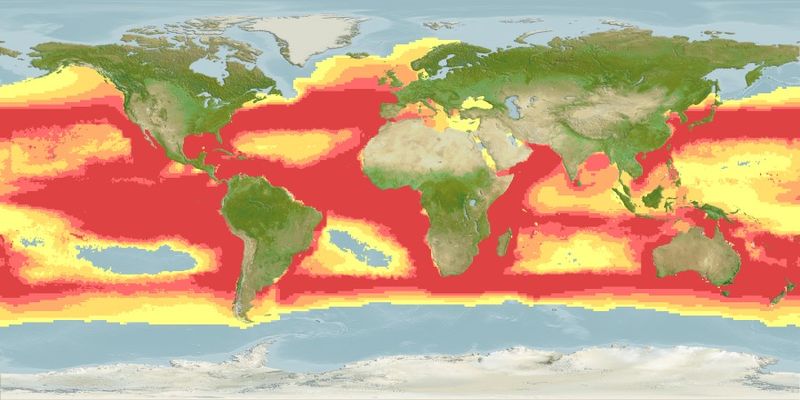
Courtesy AquaMaps.org
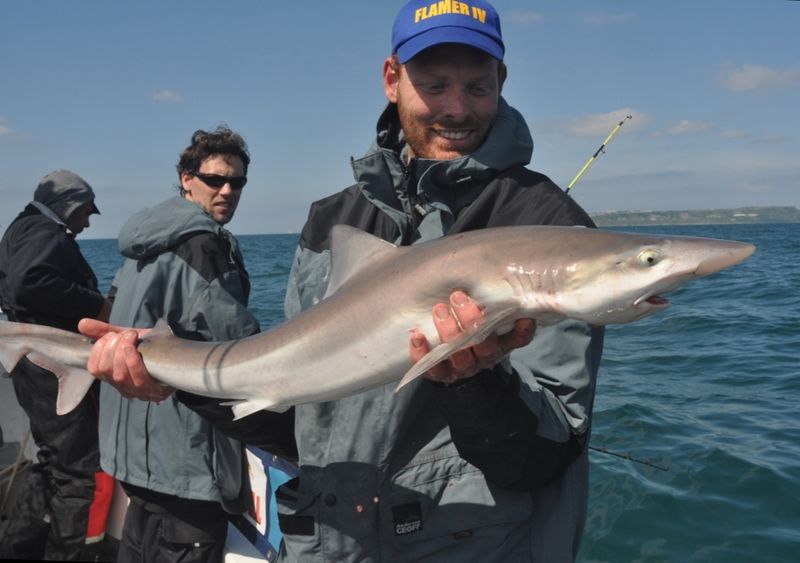
Dave Lewis
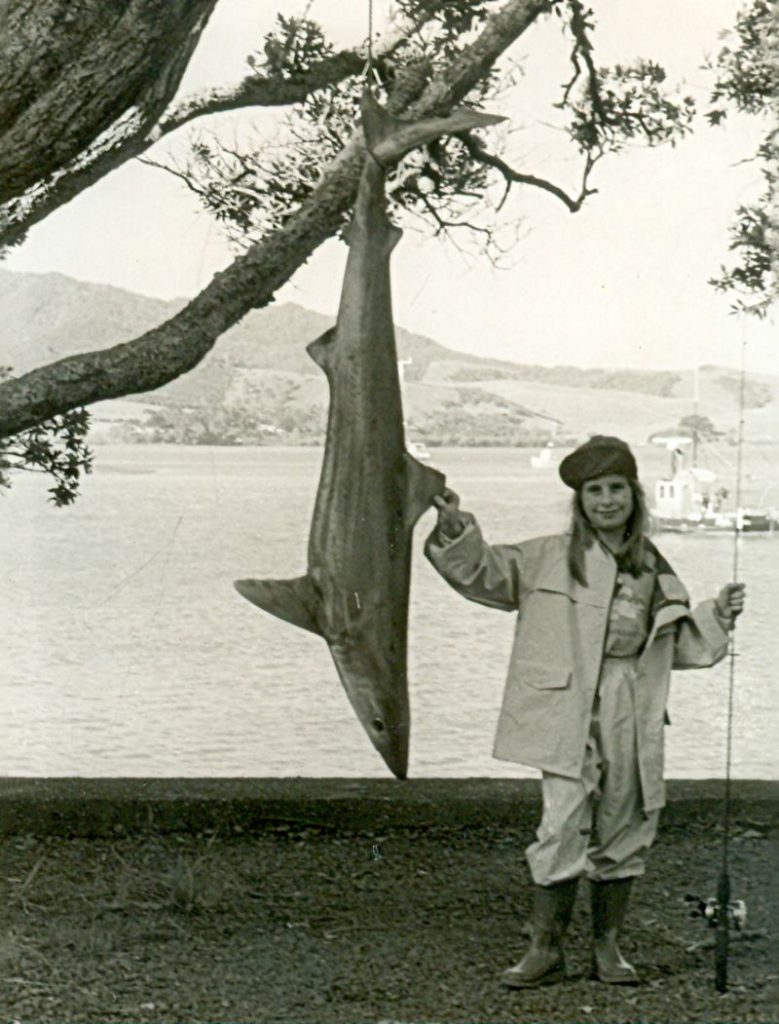
72 pounds, 12 ounces
Parengarenga Harbor, New Zealand, 1986
courtesy International Game Fish Association
Source: Sport Fishing



